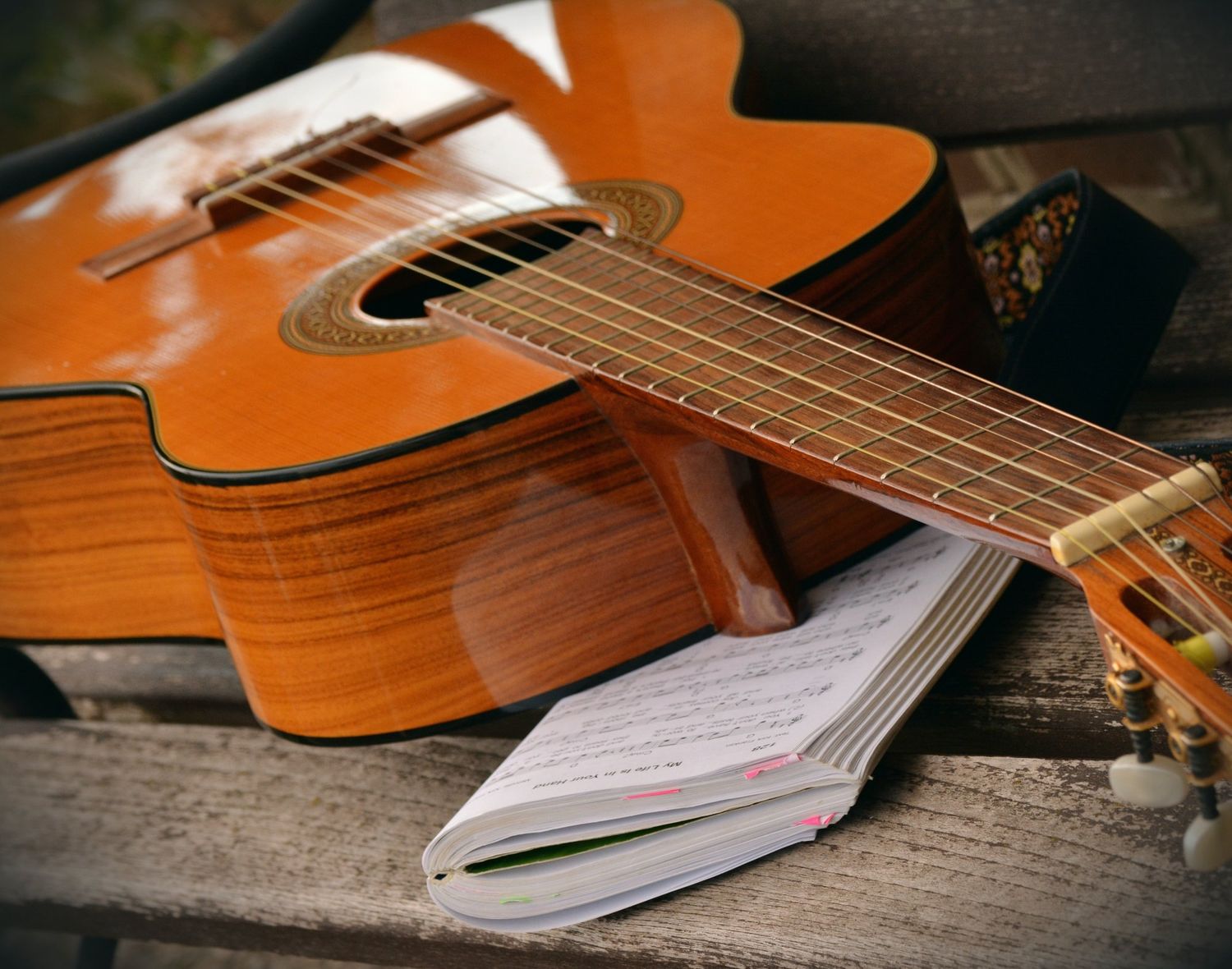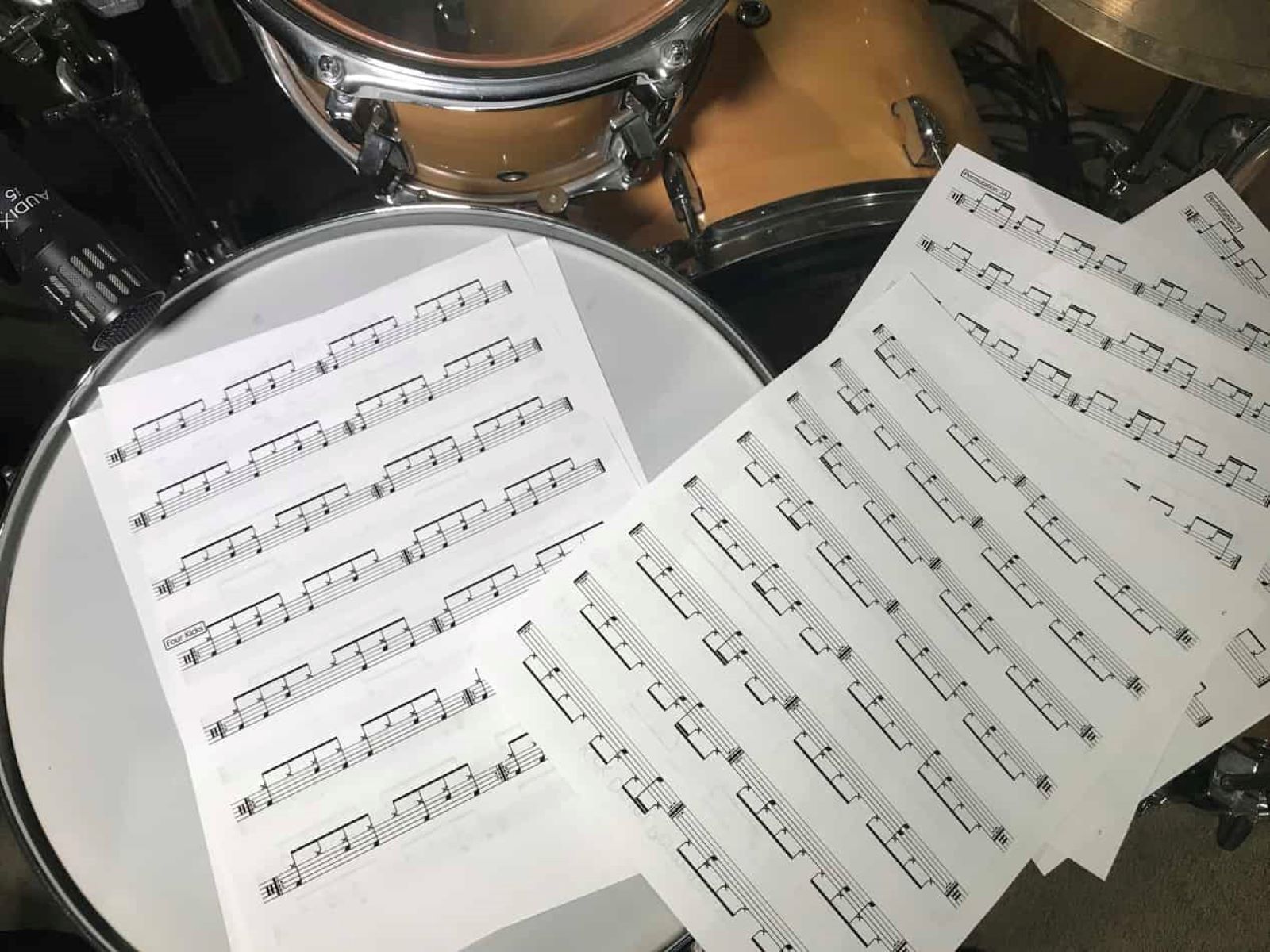Home>Instruments>Guitar>How To Write A Song On Guitar


Guitar
How To Write A Song On Guitar
Published: February 14, 2024
Learn how to write a song on guitar with our step-by-step guide. Master chord progressions, lyrics, and song structure to create your own music. Perfect for beginners and experienced guitarists alike!
(Many of the links in this article redirect to a specific reviewed product. Your purchase of these products through affiliate links helps to generate commission for AudioLover.com, at no extra cost. Learn more)
Table of Contents
Introduction
So, you've picked up your guitar and found yourself yearning to create something truly unique, a piece of music that resonates with your soul and captivates the hearts of others. Writing a song on the guitar can be an incredibly fulfilling and personal endeavor. Whether you're a seasoned guitarist or just starting out, the process of crafting a song is an opportunity to express your emotions, share your story, and connect with your audience on a profound level.
The beauty of songwriting lies in its boundless creativity. There are no strict rules or formulas to adhere to; instead, you have the freedom to explore various melodies, chord progressions, and lyrical themes until you uncover the perfect combination that speaks to you. With the guitar as your canvas, you can weave together harmonious chords, intricate riffs, and heartfelt lyrics to compose a masterpiece that is entirely your own.
In this comprehensive guide, we'll embark on a journey through the art of writing a song on the guitar. From understanding basic chords and crafting melodies to adding compelling lyrics and refining your composition, each step is an integral part of the songwriting process. By the end of this journey, you'll not only have the tools to create your own music but also the confidence to let your creativity flourish.
So, grab your guitar, unleash your imagination, and let's dive into the enchanting world of writing a song on this beloved instrument. Whether you aspire to serenade a crowd or simply wish to express your innermost thoughts, this guide will equip you with the knowledge and inspiration to bring your musical vision to life.
Understanding Basic Chords
Before delving into the intricate art of songwriting, it’s essential to grasp the fundamentals of guitar chords. Chords form the backbone of most songs, providing the harmonic framework upon which melodies and lyrics are built. As a guitarist, familiarizing yourself with a diverse range of chords will expand your musical palette and empower you to create captivating compositions.
Begin by acquainting yourself with foundational chords such as the versatile E major, the melancholic A minor, and the ubiquitous G major. These chords, comprised of specific finger placements on the fretboard, serve as the building blocks for countless songs across various genres. As you progress, venture into more complex chords, including diminished and augmented variations, to add depth and complexity to your compositions.
Furthermore, understanding chord progressions is pivotal in shaping the emotional landscape of your song. Experiment with different sequences of chords to evoke distinct moods – whether it’s the bittersweet allure of the classic I-IV-V progression or the introspective ambiance of a minor chord sequence. By exploring the interplay between chords, you can imbue your song with a compelling sense of harmony and emotion.
As you familiarize yourself with basic and advanced chords, don’t shy away from experimenting with unconventional voicings and alternative tunings. Embracing innovation and originality in your chord structures can yield truly distinctive sounds that set your compositions apart.
Ultimately, mastering basic chords is not merely about memorization; it’s about internalizing the language of music and using it as a means to articulate your creative vision. With a solid foundation in chord theory, you’ll be well-equipped to embark on the next phase of songwriting, where melodies and riffs intertwine to breathe life into your musical narrative.
Writing Melodies and Riffs
Once you’ve established a firm grasp of basic chords, the next step in crafting a captivating song on the guitar involves the creation of melodies and riffs. These melodic elements serve as the soul-stirring core of your composition, infusing it with emotion, energy, and memorability.
When crafting melodies, allow your creativity to roam freely across the fretboard. Experiment with different scales and modes, such as the evocative pentatonic scale or the versatile natural minor scale, to imbue your melodies with distinctive flavors. By exploring the nuances of each scale, you can evoke a spectrum of emotions – from wistful nostalgia to unbridled exuberance – within your musical narrative.
Riffs, on the other hand, are compelling, repetitive motifs that anchor your song in the listener’s memory. These distinctive musical phrases, often characterized by their rhythmic drive and melodic hooks, serve as the backbone of many iconic guitar-driven compositions. Whether it’s the infectious opening riff of a rock anthem or the haunting motif of a ballad, riffs have the power to captivate and resonate with audiences.
As you delve into the realm of melodies and riffs, harness the boundless potential of techniques such as hammer-ons, pull-offs, bends, and slides to infuse your compositions with expressive nuances. These techniques not only enhance the fluidity and dynamism of your playing but also imbue your melodies and riffs with a sense of personal flair and artistry.
Moreover, don’t underestimate the impact of silence and space in your melodies and riffs. Embracing pauses and rests within your compositions can create moments of tension and release, elevating the emotional impact of your music and allowing each note to resonate with profound clarity.
By intertwining captivating melodies and infectious riffs, you can sculpt a musical landscape that enraptures listeners and leaves an indelible imprint on their hearts and minds. With each note and phrase, you have the opportunity to convey your emotions and stories through the universal language of music.
Adding Lyrics
With the musical foundation of chords, melodies, and riffs in place, the addition of poignant lyrics elevates your songwriting to a realm of storytelling and emotional resonance. Lyrics have the power to convey profound narratives, evoke raw emotions, and forge deep connections with your audience. Whether you aspire to craft introspective ballads, anthemic rock songs, or infectious pop tunes, the art of lyricism is a pivotal aspect of songwriting on the guitar.
When penning lyrics, draw inspiration from your personal experiences, aspirations, and observations. Authenticity and vulnerability in your words can forge a genuine connection with your listeners, inviting them to empathize with your stories and find solace, joy, or reflection within your music.
Consider the thematic direction of your song – whether it’s a tale of love and heartbreak, a reflection on societal issues, or an introspective journey of self-discovery. Embrace imagery, metaphors, and poetic devices to infuse your lyrics with vividness and depth, allowing your words to paint a rich tapestry of emotions and narratives.
Furthermore, pay attention to the cadence and rhythm of your lyrics, ensuring that they seamlessly intertwine with the melodies and musical phrasing. The marriage of lyrical flow and melodic cadence creates a symbiotic relationship, enhancing the overall cohesion and impact of your composition.
As you craft your lyrics, strive to strike a balance between universality and individuality. While conveying personal experiences and emotions, infuse your lyrics with themes and sentiments that resonate with a broad audience, fostering a sense of collective understanding and empathy.
Ultimately, the art of adding lyrics to your song on the guitar is an invitation to share your innermost thoughts, passions, and vulnerabilities with the world. Through the alchemy of music and language, you have the power to create a profound emotional connection that transcends boundaries and resonates with the human spirit.
Structuring Your Song
As you embark on the journey of crafting a song on the guitar, understanding the structural elements that underpin your composition is pivotal. Song structure serves as the architectural framework that guides the flow and progression of your musical narrative, ensuring that each section seamlessly intertwines to captivate and engage your audience.
Begin by acquainting yourself with the classic song structures that have shaped countless timeless compositions. The verse-chorus-bridge format, for instance, provides a versatile template for arranging your song’s components. The verse sets the stage for storytelling and development, the chorus serves as a memorable and emotive anchor, and the bridge introduces a compelling deviation that adds depth and variety to your composition.
Furthermore, consider the dynamics of your song – the ebb and flow of energy, emotion, and intensity that imbue your composition with a sense of movement and progression. Experiment with variations in tempo, volume, and instrumental arrangements to craft a dynamic sonic journey that resonates with your listeners.
While adhering to established structures can provide a solid framework, don’t shy away from innovation and experimentation. Embrace the freedom to deviate from traditional templates, allowing your creativity to dictate the unique contours and progression of your song. Whether it’s an unconventional song form, an extended instrumental interlude, or a captivating modulation, daring to push the boundaries of structure can yield truly distinctive and compelling musical narratives.
Consider the emotional arc of your song – the gradual build-up of tension, the climactic release, and the poignant resolution. Each section of your composition should contribute to this overarching emotional journey, guiding your audience through a captivating exploration of sentiments, themes, and musical motifs.
Ultimately, the art of structuring your song on the guitar is an opportunity to orchestrate a captivating musical odyssey that resonates with your audience. By infusing your composition with thoughtful pacing, variation, and emotional depth, you can craft a sonic tapestry that leaves a lasting impression and invites listeners to embark on an unforgettable musical voyage.
Refining and Revising Your Song
As you near the culmination of your songwriting journey on the guitar, the process of refining and revising your composition emerges as a crucial phase in elevating your musical creation from a raw idea to a polished masterpiece. This stage invites introspection, discernment, and a discerning ear as you meticulously sculpt and hone every facet of your song.
Begin by scrutinizing the coherence and continuity of your composition. Assess the seamless transition between sections, ensuring that each verse, chorus, bridge, and instrumental interlude flows harmoniously to weave a cohesive musical tapestry. Pay attention to the pacing and progression of your song, identifying opportunities to enhance the emotional impact and captivate your audience from the opening chords to the final cadence.
Delve into the nuances of instrumentation and arrangement, considering the interplay of guitar tones, dynamics, and embellishments that enrich your composition. Experiment with variations in strumming patterns, fingerpicking techniques, and chord voicings to infuse your song with depth and texture, creating a sonic landscape that captivates and resonates with listeners.
Moreover, the art of refining your song extends to the lyrical and melodic realms. Scrutinize the poignancy and evocativeness of your lyrics, ensuring that each word and phrase resonates with authenticity and emotional resonance. Fine-tune your melodies and riffs, seeking to imbue them with expressive nuances and captivating hooks that linger in the listener’s memory.
Embrace the invaluable role of feedback in the refinement process. Seek input from fellow musicians, mentors, or trusted listeners, inviting diverse perspectives that shed light on potential areas for enhancement. Constructive criticism and fresh insights can offer invaluable guidance, empowering you to elevate your composition to new heights of artistic excellence.
Finally, approach the process of revision with patience and perseverance. Embrace the iterative nature of songwriting, recognizing that each refinement, no matter how subtle, contributes to the refinement of your musical opus. Embrace the journey of continuous improvement, allowing your song to evolve and flourish with each revision until it embodies your artistic vision in its most compelling form.











